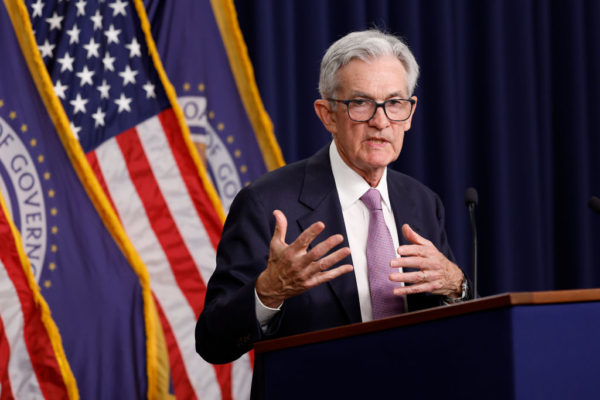The U.S. Department of Commerce reported on Friday (September 27) that the inflation rate in August was closer to the target set by the Federal Reserve, paving the way for future rate cuts.
On Friday, the U.S. Department of Commerce released data showing that the U.S. core PCE price index in August fell by 2.2% compared to the same period last year, the lowest level since March 2021, with an expected value of 2.3%, cooling from the previous month’s 2.5%.
The core index, which excludes the more volatile food and energy prices and is closely monitored by the Federal Reserve, rose by 2.7% in August compared to the same period last year, meeting expectations.
These data indicate that inflation continues to move towards the Fed’s annual target of 2%.
Federal Reserve officials cut interest rates by 50 basis points last week, bringing the benchmark rate to between 4.75% and 5%, citing improved inflation and a cooling labor market.
Wall Street Journal senior reporter Nick Timiraos stated on social media that the PCE index favored by the Federal Reserve is now approaching the Fed’s established target.
“Over the 12 months ending in August, the index rose by 2.2%, not far from the Fed’s 2% target. One year and two years ago, this index was 3.4% and 6.6%, respectively. The core PCE data rose by 2.7% in August. The core inflation rate for the previous 12 months was 3.8% a year ago and 5.4% two years ago.”
Bloomberg economists Stuart Paul, Eliza Winger, and Estelle Ou also mentioned that “Personal income, spending, and inflation data unexpectedly declined in August, confirming the Federal Reserve’s decision to cut policy rates by 50 basis points earlier this month.”
They emphasized that income growth is cooling, which may lead consumers to become more cautious in changing their spending habits.
“With potential inflationary pressures easing, we believe the Fed will increasingly focus on ensuring full employment as part of its dual mandate,” they said.
Chris Larkin, Managing Director of Trading and Investing at Morgan Stanley E-Trade, commented, “Today’s PCE price index is a favorable economic indicator. Inflation remains low, although economic growth may be slowing, there are no signs indicating it is plummeting off a cliff.”
The data released on Friday also included personal spending and income figures, which showed modest performance.
Personal income rose by 0.2% month-on-month, while spending increased by 0.2%, compared to the expected growth of 0.4% and 0.3%, respectively.
Following the release of the report, stock market futures rose, while U.S. Treasury yields fell.
Housing-related costs continued to be under pressure, with housing-related costs increasing by 0.5% month-on-month in August, the largest increase since January. Service prices rose by 0.2% overall, while goods prices fell by 0.2%.
In recent days, Federal Reserve officials have shifted their focus from curbing inflation to supporting a labor market showing signs of weakness. During last week’s monetary policy meeting, officials indicated the possibility of further rate cuts of 50 basis points within 2024 and another 100 basis points by 2025, although the market expects the rate cuts to be even larger.

